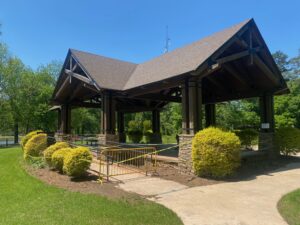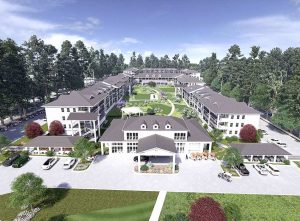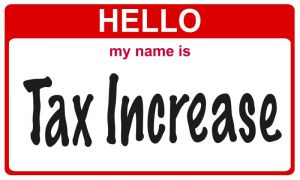Yet again, a proposed new set of rules for the location of new cellphone towers in Peachtree City has been put on hold.
This time, it’s so city staff can change language that would have allowed wireless companies to put an antenna on an existing building or structure without getting a review from the Planning Commission or the City Council. Council decided it wanted to review antenna locations even though they wouldn’t involve a new tower.
The matter was brought up by Peachtree City Civic Association President Beth Pullias, who joined a chorus of several citizens asking council to eliminate public parks from consideration for a potential new celltower.
Pullias said the association preferred to have all towers reviewed at a public hearing so residents can have input. The latest version of the ordinance did indeed require public hearings for towers at both the planning commission and council meetings, but it allowed for antenna locations without new towers, such as those placed on existing buildings or light standards, to be approved without review by council or the planning commission.
Jen Blackburn, an attorney representing Verizon Wireless, noted that the industry does not build towers on top of existing buildings due to structural concerns but it could perhaps use a tall building to host an antenna to enhance cellular service.
Mayor Don Haddix said he understood the citizens’ concerns about allowing celltowers in public parks. But if the city became too restrictive with its celltower zoning, he said, it would risk a lawsuit that could force the city to allow towers in more locations than it wishes.
Community Development Director David Rast noted that the new ordinance is much more restrictive, particularly in terms of setbacks, compared to the current ordinance.
The ordinance while tightening up setbacks and other site location issues for potential celltowers also expands the zoning classifications on which a tower can be used, adding general commercial and office institutional to a list of already-allowed districts including open space-public, limited industrial and general industrial.
But even towers allowed on land zoned GC or OI must meet all the setbacks in the ordinance, including 200 feet from any residentially-zoned property and 250 feet from the property line if it abuts a residential property that has greenspace in-between the home and the proposed tower.
City resident Kevin Cheney suggested celltowers should be forbidden from city parks such as the one he lives near, Bluesmoke Park. Under the new ordinance and the existing ordinance, celltowers would be allowed in city parks, but because the city owns the land it can resist such proposals if it wishes, officials have noted.
Cheney said he didn’t doubt that the current council would not allow a celltower in a city park, but he was certain a future council would.
Officials also suggested that even if the ordinance forbid celltowers in city parks, a future council could change the ordinance to allow it if it so chose.
Cheney noted that a technology called microcells allows residents experiencing signal issues in their home to connect to a computer to improve their signal.
Pete Meadows of AT&T Wireless noted that such microcells are typically limited to improving a signal in one’s own home without extending outside the home. He also said a broadband Internet connection is required for such service.
Cheney also said that residents with poor cellular signals also could simply switch carriers. Mayor Haddix noted that is not a legally defensible reason allowing the city to deny a new celltower.
The rewording on the antenna issue necessitated a 30-day postponement on the matter, and as a result council also extended the moratorium on new celltower applications for 30 more days.










Leave a Comment
You must be logged in to post a comment.